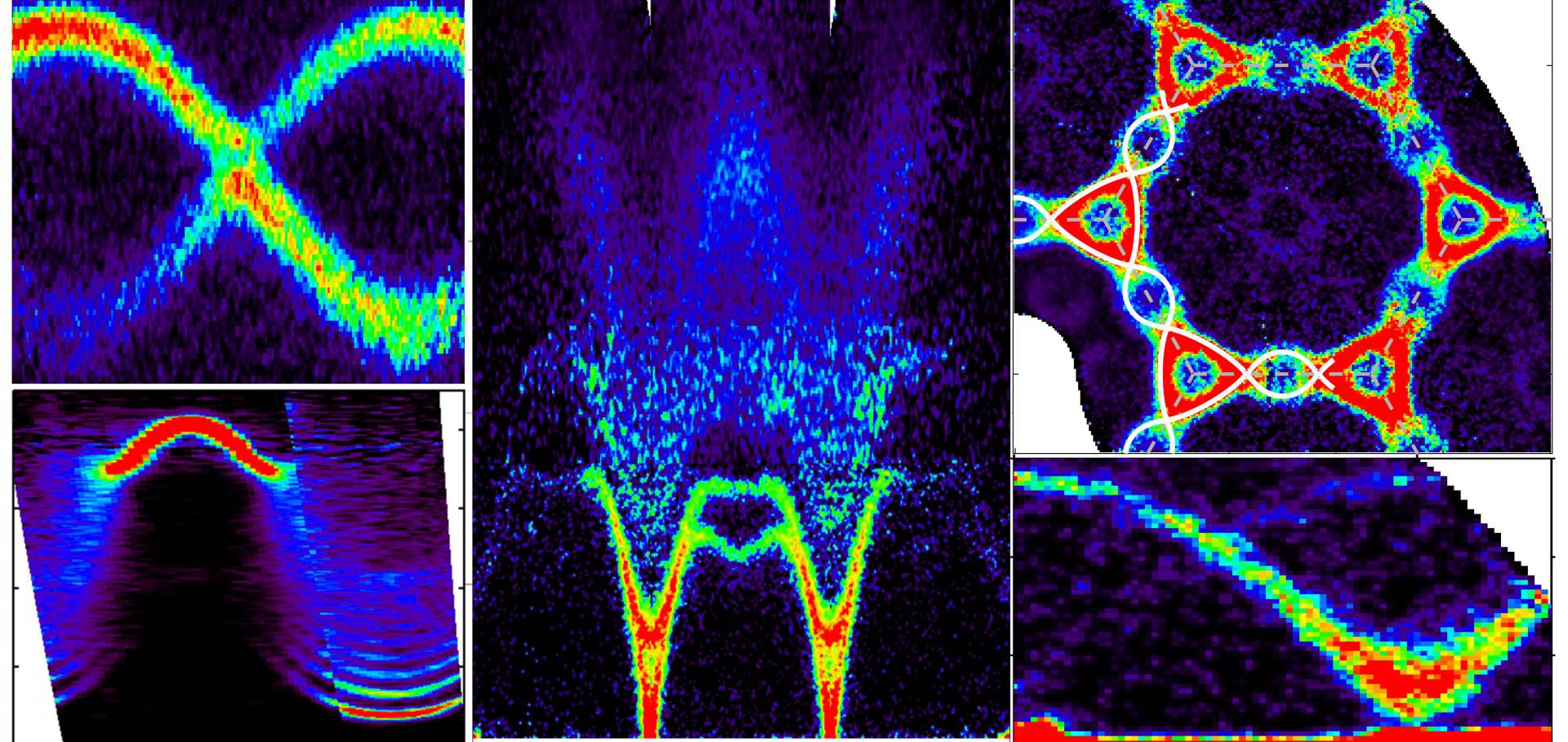Order-by-Disorder from Bond-Dependent Exchange and Intensity Signature of Nodal Quasiparticles in a Honeycomb Cobaltate
Nature Communications
Avoided quasiparticle decay and enhanced excitation continuum in the spin-1/2 near-Heisenberg triangular antiferromagnet Ba3CoSb2O9
Physical Review B: Condensed Matter and Materials Physics
Abstract:
We explore the magnetic excitations of the spin-1/2 triangular antiferromagnet Ba3CoSb2O9 in its 120 degree ordered phase using single-crystal high-resolution inelastic neutron scattering. Sharp magnons with no decay are observed throughout reciprocal space, with a strongly renormalized dispersion and multiple soft modes compared to linear spin wave theory. We propose an empirical parametrization that can quantitatively capture the complete dispersions in the three-dimensional Brillouin zone and explicitly show that the dispersion renormalizations have the direct consequence that one to two magnon decays are avoided throughout reciprocal space, whereas such decays would be allowed for the unrenormalized dispersions. At higher energies, we observe a very strong continuum of excitations with highly-structured intensity modulations extending up at least 4x the maximum one-magnon energy. The one-magnon intensities decrease much faster upon increasing energy than predicted by linear spin wave theory and the higher-energy continuum contains much more intensity than can be accounted for by a two-magnon cross-section, suggesting a significant transfer of spectral weight from the high-energy magnons into the higher-energy continuum states. We attribute the strong dispersion renormalizations and substantial transfer of spectral weight to continuum states to the effect of quantum fluctuations and interactions beyond the spin wave approximation, and make connections to theoretical approaches that might capture such effects. Finally, through measurements in a strong applied magnetic field, we find evidence for magnetic domains with opposite senses for the spin rotation in the 120 degree ordered ground state, as expected in the absence of Dzyaloshinskii-Moriya interactions, when the sense of spin rotation is selected via spontaneous symmetry breaking.Glide symmetry breaking and Ising criticality in the quasi-1D magnet CoNb2O6
Proceedings of the National Academy of Sciences National Academy of Sciences 117:41 (2020) 25219-25224
Abstract:
We construct a microscopic spin-exchange Hamiltonian for the quasi–one-dimensional (1D) Ising magnet CoNb2O6 that captures detailed and hitherto-unexplained aspects of its dynamic spin structure factor. We perform a symmetry analysis that recalls that an individual Ising chain in this material is buckled, with two sites in each unit cell related by a glide symmetry. Combining this with numerical simulations benchmarked against neutron scattering experiments, we argue that the single-chain Hamiltonian contains a staggered spin-exchange term. We further argue that the transverse-field–tuned quantum critical point in CoNb2O6 corresponds to breaking this glide symmetry, rather than an on-site Ising symmetry as previously believed. This gives a unified microscopic explanation of the dispersion of confined states in the ordered phase and quasiparticle breakdown in the polarized phase at high transverse field.Unconventional magnetic order on the hyperhoneycomb Kitaev lattice in β-Li2IrO3: Full solution via magnetic resonant x-ray diffraction
PHYSICAL REVIEW B 90:20 (2014) ARTN 205116
From continuum excitations to sharp magnons via transverse magnetic field in the spin-12 Ising-like triangular lattice antiferromagnet Na2BaCo(PO4)2
Physical Review B American Physical Society (APS) 112:10 (2025) 104413


